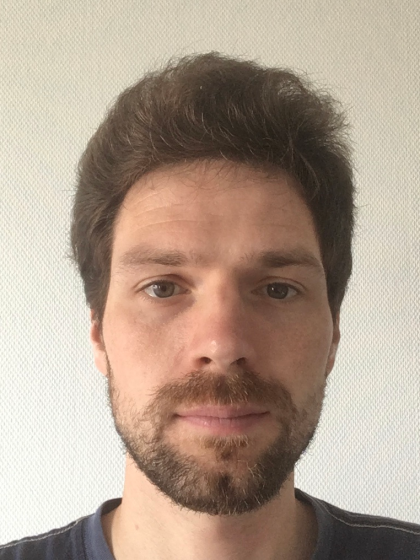K.A.M. (Kristof) de Bruyn, Dr

Expertise
Ik ben onderzoeker bij het Van Swinderen Instituut voor deeltjesfysica en zwaartekracht, en werkzaam bij de afdeling Hoge Energie Fysica. I neem deel aan het Large Hadron Collider beauty (LHCb) experiment, en bestudeer het spontaan uit elkaar vallen van zeldzame subatomaire deeltjes die het zware beauty quark bevatten. Deze exotische deeltjes vormen een bijzonder hulpmiddel om het Standaardmodel der elementaire deeltjes te testen. Hierin worden de fundamentele bouwstenen van ons Universum en hun onderlinge interacties beschreven. Recente experimentele resultaten van het LHCb experiment die vervalspaden met elkaar vergelijken die elektronen, muonen of tau-leptonen bevatten, blijken te verschillen van de voorspellingen van het Standaardmodel. Met mijn onderzoek wil ik de oorsprong van deze verschillen begrijpen. Ik plan daarom een nieuwe meting van een vergelijkbaar maar verschillend vervalsproces: de desintegratie van een subatomair deeltje gemaakt uit de combinatie van een beauty en een charm-quark in een tau lepton en zijn neutrino.Naast het analyseren van de data die zijn verzameld door het LHCb-experiment, ben ik ook betrokken bij de constructie en in gebruiksname van LHCb's binnenste siliciumpixeldetector, de Vertex Locator. Deze detector is cruciaal voor het identificeren van deeltjes die beauty quarks bevatten temidden van de vele andere deeltjes die zijn ontstaan bij de proton-proton botsingen die worden geproduceerd door de Large Hadron Collider.Signalen voor nieuwe fenomenen in de deeltjesfysica zijn uiterst zeldzaam en vereisen daarom de real-time analyse van miljoenen botsingen per seconde. Willen we deze zoektocht in de toekomst voortzetten, dan zullen we met het LHCb experiment steeds meer data moeten verzamelen. Dit vereist de ontwikkeling van nieuwe technologie die door middel van tijdsinformatie op de schaal van picoseconden de vele botsingen van elkaar kan onderscheiden. Ik ben betrokken bij de R&D voor de volgende generatie siliciumpixeldetectoren, waarbij ik focus op hoe we alle individuele pixels kunnen synchroniseren met een precisie van picoseconden.
| Laatst gewijzigd: | 01 maart 2024 14:20 |
